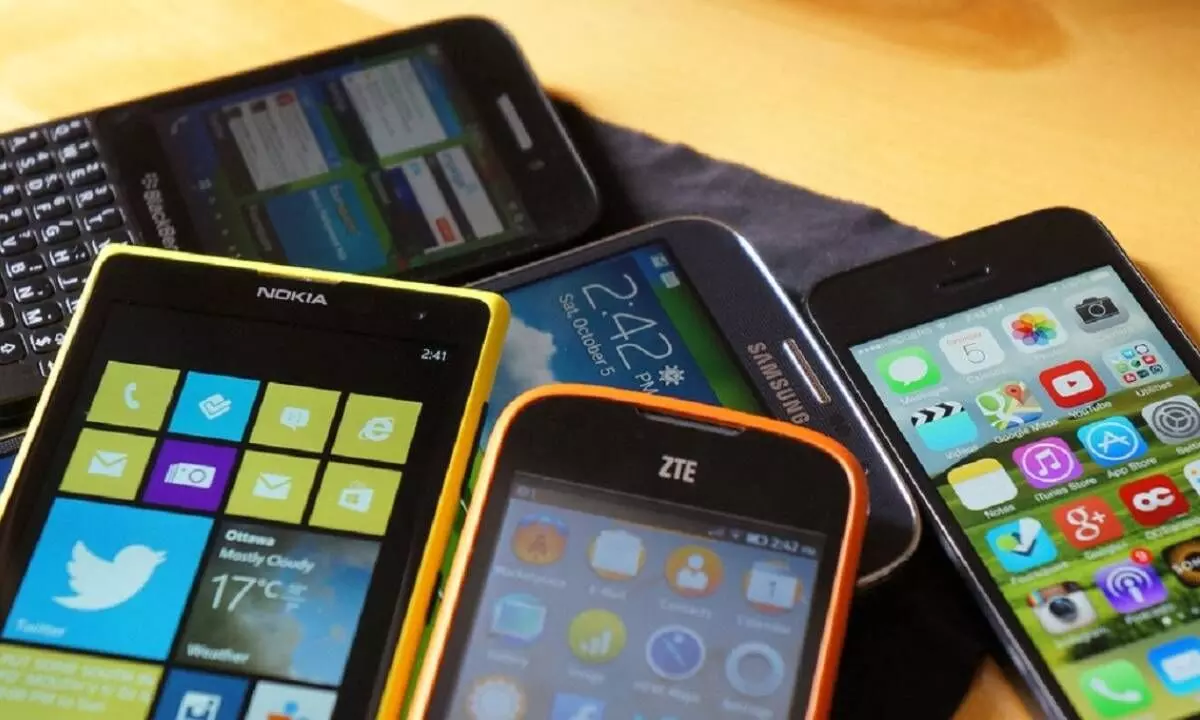From a non-entity in 2014 to fifth highest exporter of smartphones, India shines bright
Set to cross Rs 1,20,000 crore in mobile exports in the current fiscal
image for illustrative purpose

This year, smartphones are the fifth highest exported product from India. Having already crossed Rs one lakh crore in our 'Techade',it is bound to propel India into a major global electronics player in the years ahead, says Rajeev Chandrasekhar, Union Minister of State for Electronics and IT.
According to him, India is rising steadily as a trusted partner in the global electronics supply chains. "From having to import 82 per cent of all smartphones in 2014 to manufacturing almost 100 per cent of all smartphones in the country, India's electronics sector has come of age," Chandrasekhar said.
Post-Covid has resulted in every global supply chain undergoing a major redrawing and India is certainly working towards its growths in terms of presence and market share, he says. In 2014, it represented less than Rs 1 lakh crore of electronics manufacturing.
"Our target is that by 2026, it will be Rs 24 lakh crore -- a 24-time increase in just over a decade. In 2014, India exported zero smartphones and this year, smartphones are the fifth highest exported product from India," informed the minister.
Buoyed by friendly government policies and production-linked incentive (PLI) scheme, India is set to cross Rs 1,20,000 crore in mobile exports in the current fiscal year (FY24), driven by tech giant Apple. The country surpassed a remarkable Rs 90,000 crore worth smartphone exports in the fiscal year 2022-2023, according to the India Cellular and Electronics Association (ICEA).
Chandrasekhar said that our ambitions and plans are described as "broadening and deepening" the electronics ecosystem and creating scale and volumes so that an ecosystem of components can also develop in India soon.
The production-linked incentive (PLI) scheme for IT hardware, with budgetary outlay of Rs 17,000 crore, has also been announced recently that will help laptops, data centres, servers infrastructure be manufactured in India.
"It is expected to lead to total production of about Rs 3.35 lakh crore, bring an additional investment of Rs 2,430 crore in electronics manufacturing and will lead to generation of 75,000 additional direct jobs," Chandrasekhar.
According to him, in tech, change is the only constant. "In recent years, the pace of innovation has increased and now disruptive technologies are the new normal. Digital economy as a percentage of our economy has gone from around 4 per cent in 2014 to 10 per cent today and is expected, due to the enterprise and energy of young Indians, to touch 20 per cent of our GDP by 2026," the minister emphasised.
Digital economy is expected to generate around 60-65 million employment opportunities by 2025-26. "As someone who has seen tech for more than three decades, I am more than excited at where we are today, thanks to the policy decisions initiated by Prime Minister Narendra Modi," he said.

